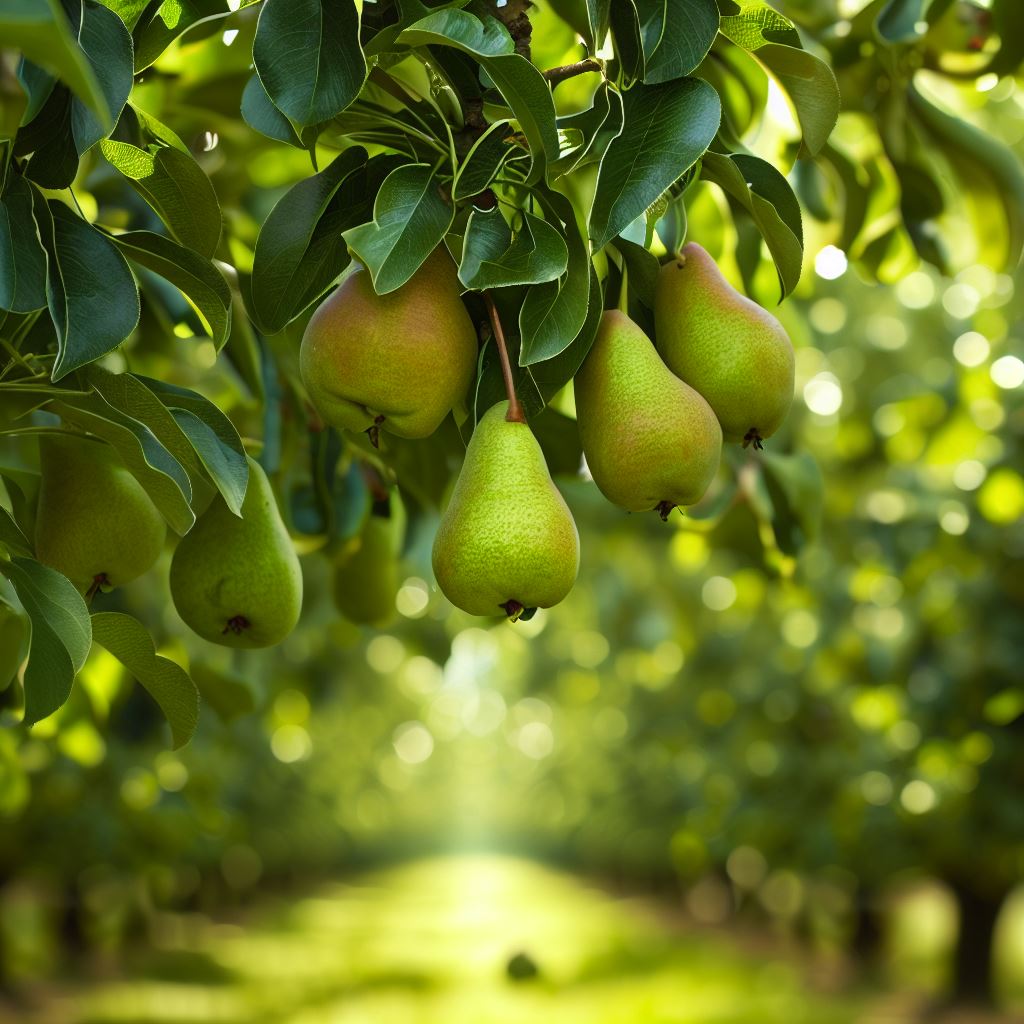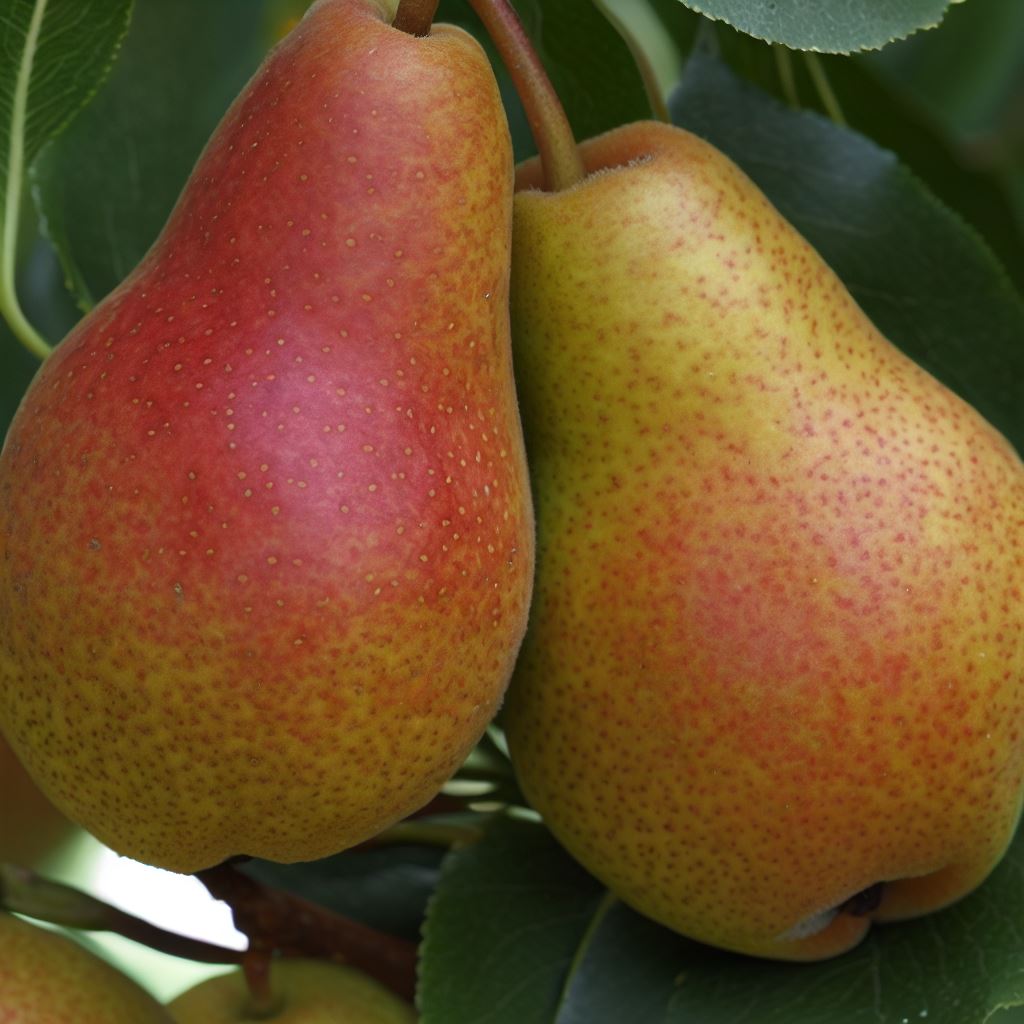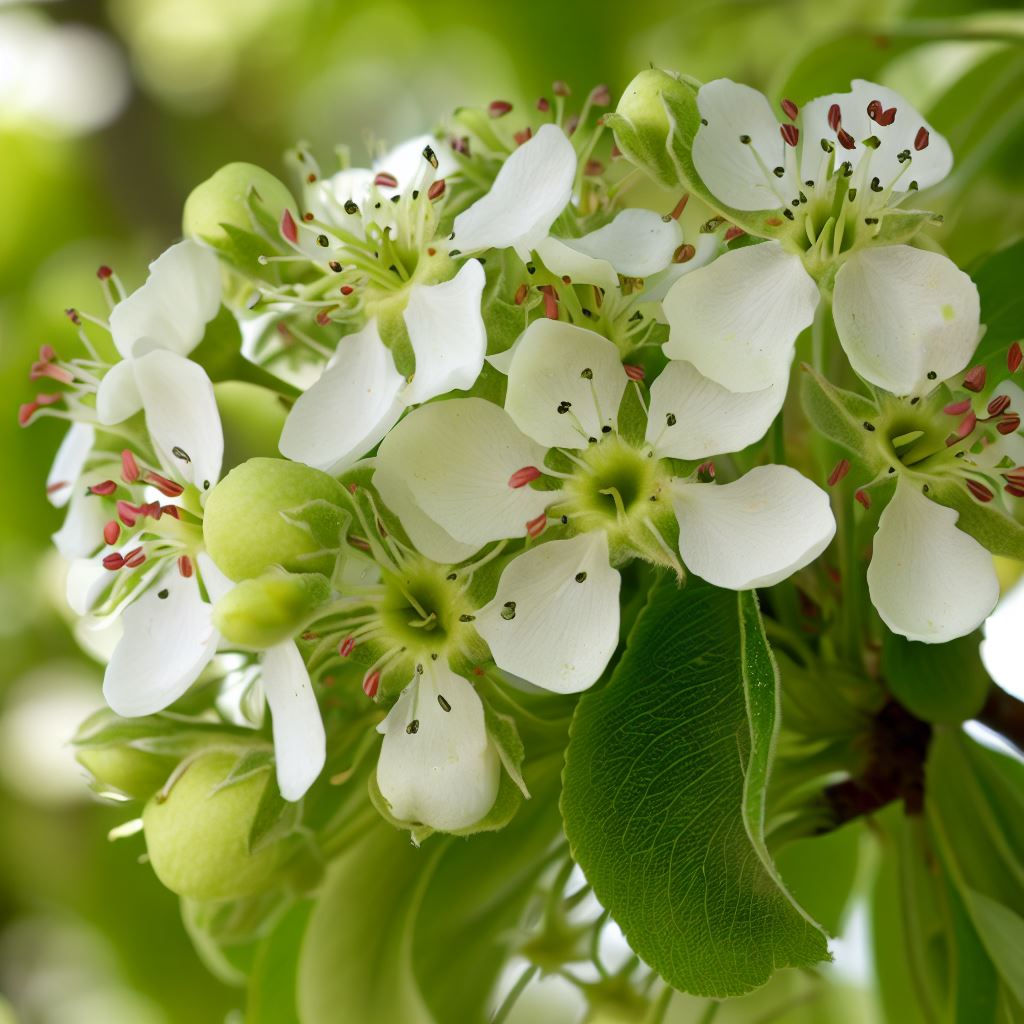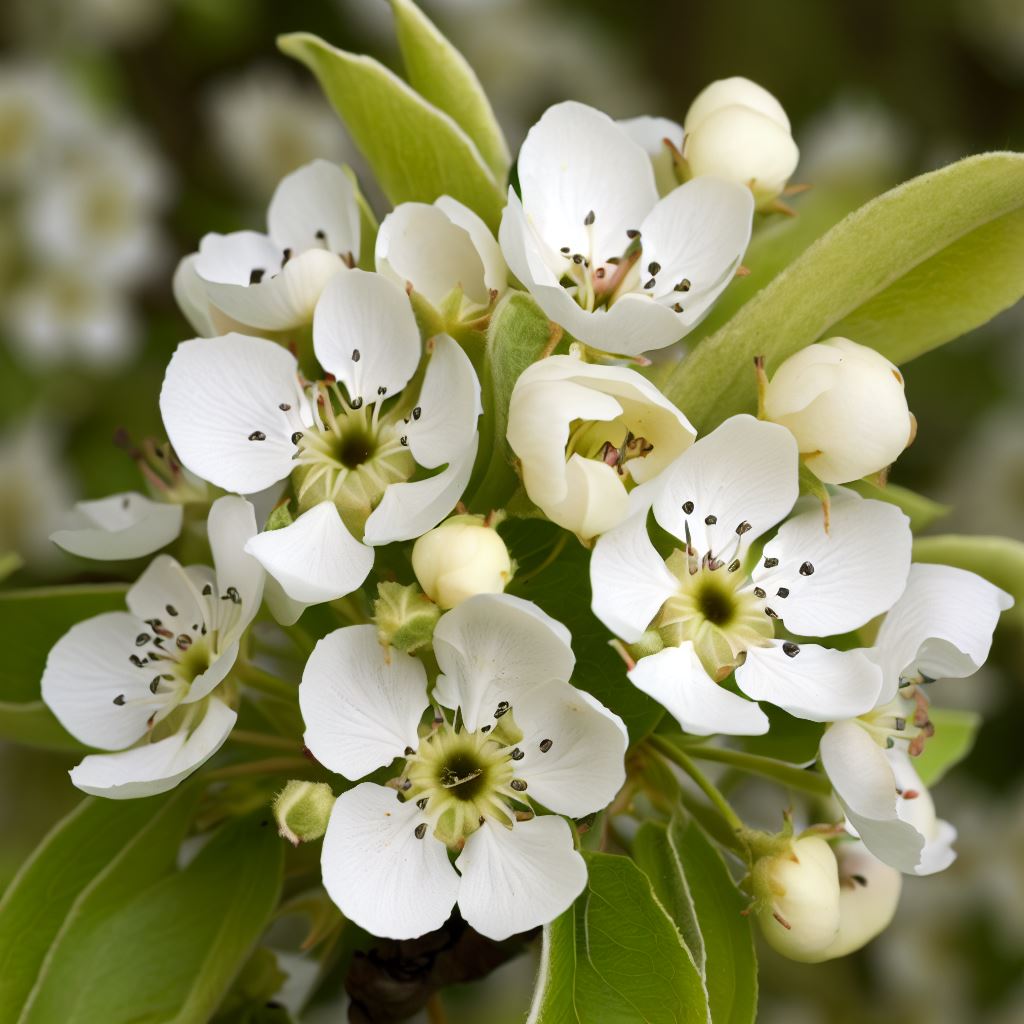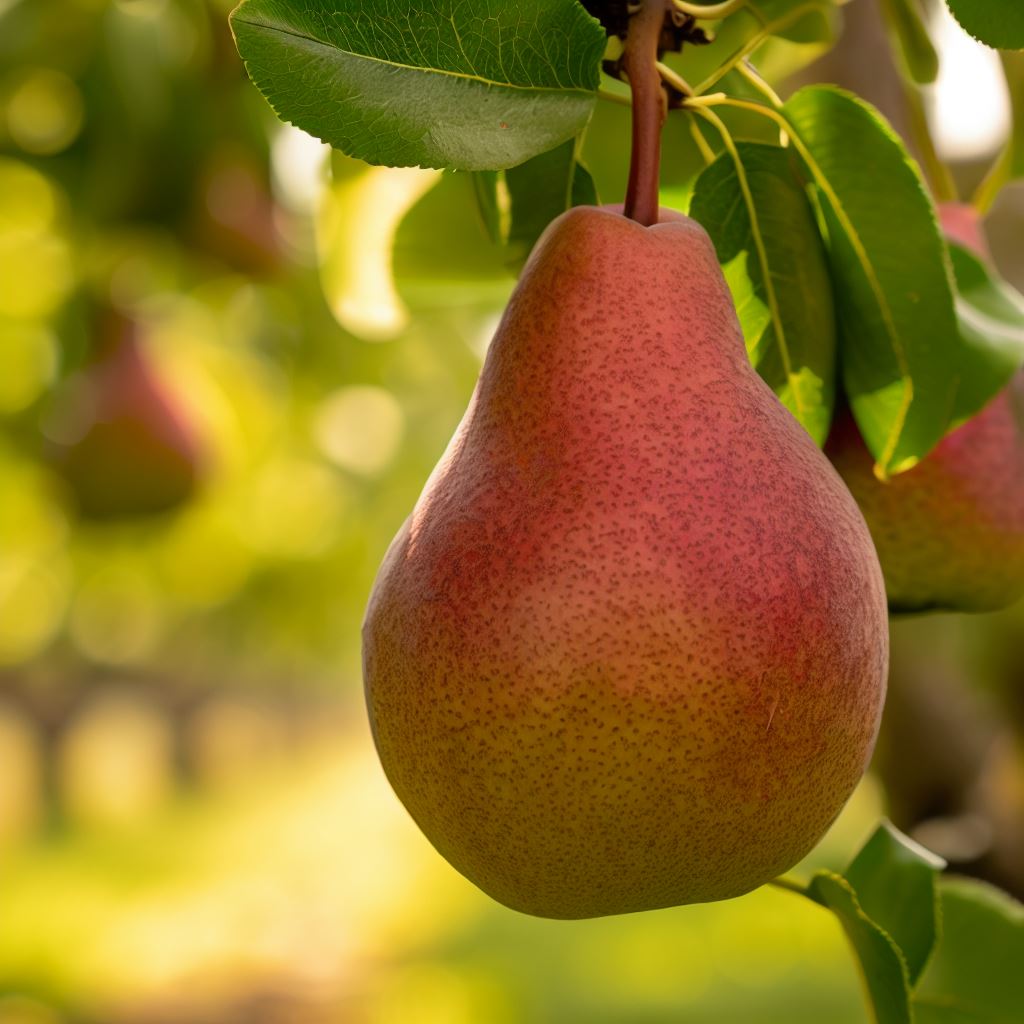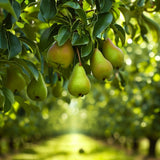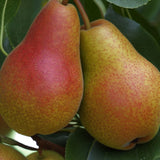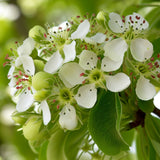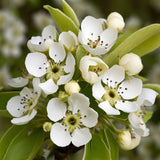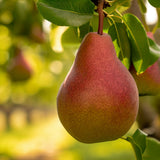Pyrus communis x Kirschensaller (Kirschensaller Pear, European Pear)
Pyrus communis x Kirschensaller (Kirschensaller Pear, European Pear) is a widely cultivated species of pear tree and the source of the delicious fruit enjoyed by people around the world. This delightful and sweet pear has a rich history of cultivation throughout Europe for many centuries. Originating in central and eastern Europe as well as southwest Asia, it ranks among the most significant fruits in temperate regions and is extensively grown in Europe, North America, and Australia.
Tree Appearance: Pyrus communis is a deciduous tree that typically reaches a height of 15 to 50 feet (4.5 to 15 meters) when mature. It has an upright and relatively narrow crown with ovate to elliptical leaves that are glossy and dark green.
Fruit: The flesh of the pear is typically sweet, juicy, and creamy when ripe. It can have a range of flavors from mildly sweet to slightly tart. The texture of the fruit can vary as well, from smooth and buttery to slightly grainy.
Flowering and Fruit Production: European pear trees produce clusters of small, white to creamy-white flowers in the spring, usually before or during the emergence of new leaves. The fruit typically matures and is ready for harvest in late summer to early fall.
Cultivation: European pear trees are grown in a variety of climates and are adaptable to a range of soil types, but they thrive in well-drained, loamy soil. They require full sun for optimal fruit production and should be pruned to maintain their shape and encourage fruit-bearing.
Culinary Uses: European pears are enjoyed fresh, either on their own or in salads, desserts, and charcuterie boards. They are also used for cooking, baking, and making preserves, jams, and pear-based products like pear juice and pear brandy.
Health Benefits: Pears are a good source of dietary fiber, vitamins (especially vitamin C and vitamin K), and antioxidants. They are known for promoting digestive health and may have other potential health benefits.
Ornamental Value: In addition to fruit production, European pear trees are sometimes cultivated for their ornamental value due to their attractive flowers and foliage. European pears have been cultivated for centuries and are a popular and versatile fruit used in various culinary applications. The range of flavors and textures among different pear varieties makes them a favorite among fruit enthusiasts and chefs alike.
The 'Kirschensaller' Pear stands out as a favored rootstock for domestic pear cultivars, yielding some of the largest and most luscious pears available. For the best quality, it's advisable to pick this pear when it reaches maturity but before it ripens fully. Give this scrumptious pear a try today and experience the enduring appeal that has made it a cherished fruit around the world.
Botanical Name : Pyrus communis x Kirschensaller
Common Name : Kirschensaller Pear, European Pear
Height : 15-50 ft
Spread : 10-30 ft
Germination Info : Seed requires 90 days cold moist stratification
Hardiness zone : 5 and UP
Average seed per ounce : Approx. 700

